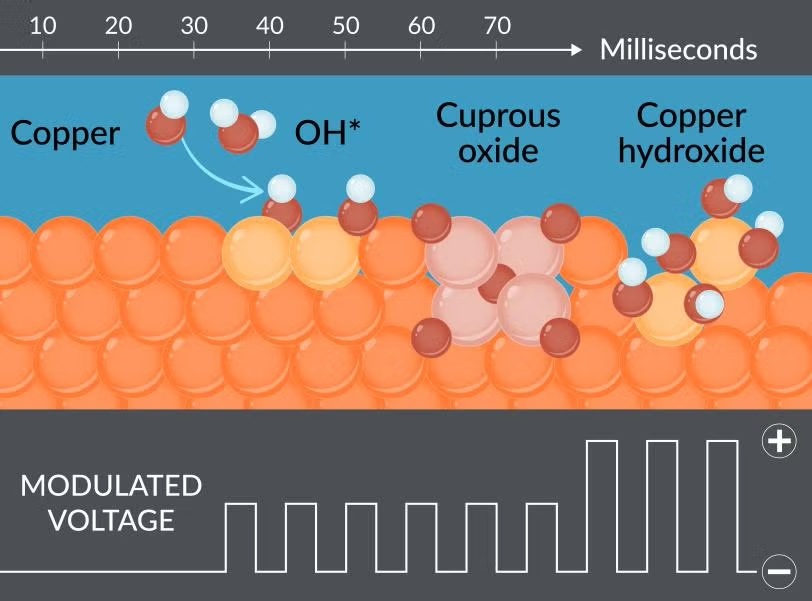Copper is the most promising catalyst for turning carbon dioxide into valuable chemical feedstocks and liquid fuels through reactions that are driven by electricity. But those reactions are not as efficient or selective as they need to be, and the electrochemical reactors where they take place aren’t sturdy enough for deployment on an industrial scale.
A new method devised by researchers from SLAC National Accelerator Laboratory and Berkeley Lab enables observation of the few copper atoms that actively participate in catalytic reactions—on the surface of a copper film that’s hundreds of layers thick—while ignoring the rest. The technique, called modulation excitation X-ray absorption spectroscopy (ME-XAS), was developed at the Stanford Synchrotron Radiation Lightsource (SSRL) and can be applied to studying a wide range of energy technologies.
It involves generating reaction-triggering electric pulses and changing their frequencies, voltages, and shapes while X-rays bounce off the surface of the copper film and into a detector, recording data the whole time. Analyzing data from the brief intervals when the electric pulses were switched on and the catalyst atoms were active illuminated the individual steps of reactions and timed them to within a few thousandths of a second.
“Seeing how the chemical states change and on what time scale is very important,” said Molecular Biophysics and Integrated Bioimaging (MBIB) Division Director Junko Yano, who co-led the study with SSRL senior scientist Dimosthenis Sokaras. “This new method is like creating thousands of tiny windows into what’s going on, and it gives us information that we could not get before.”
Dean Skoien, an SSRL staff engineer, had to develop complex customized electronics for triggering, recording and saving gigabytes of data while analyzing them on the fly. The analysis effort also drew on the expertise of Berkeley Lab project scientist Philipp Simon, who developed customized routines that helped extract meaningful signals from highly dynamic and fluctuating datasets.
Another team led by SLAC researchers and including Yano recently used ME-XAS, along with computational and other sensitive methods, to prove the existence of a copper hydroxide with the chemical formula CuOOH. ME-XAS produced a copper spectral signature that indicated the presence of the copper hydroxide. Subsequent testing supplied insights into its formation and indicated that this oxidized form of copper could be a more durable catalyst.
Yano is a principal investigator for the DOE-funded Liquid Sunlight Alliance (LiSA) project, an effort led by the California Institute of Technology to pursue ways to convert carbon dioxide into chemicals and fuels using energy from the sun. Berkeley Lab and SLAC are both key partners.
This article has been adapted from a SLAC press release; read the full text.




